Opening Remarks & Introduction to Muon Science
Prof. Kenya M. Kubo
International Christian University
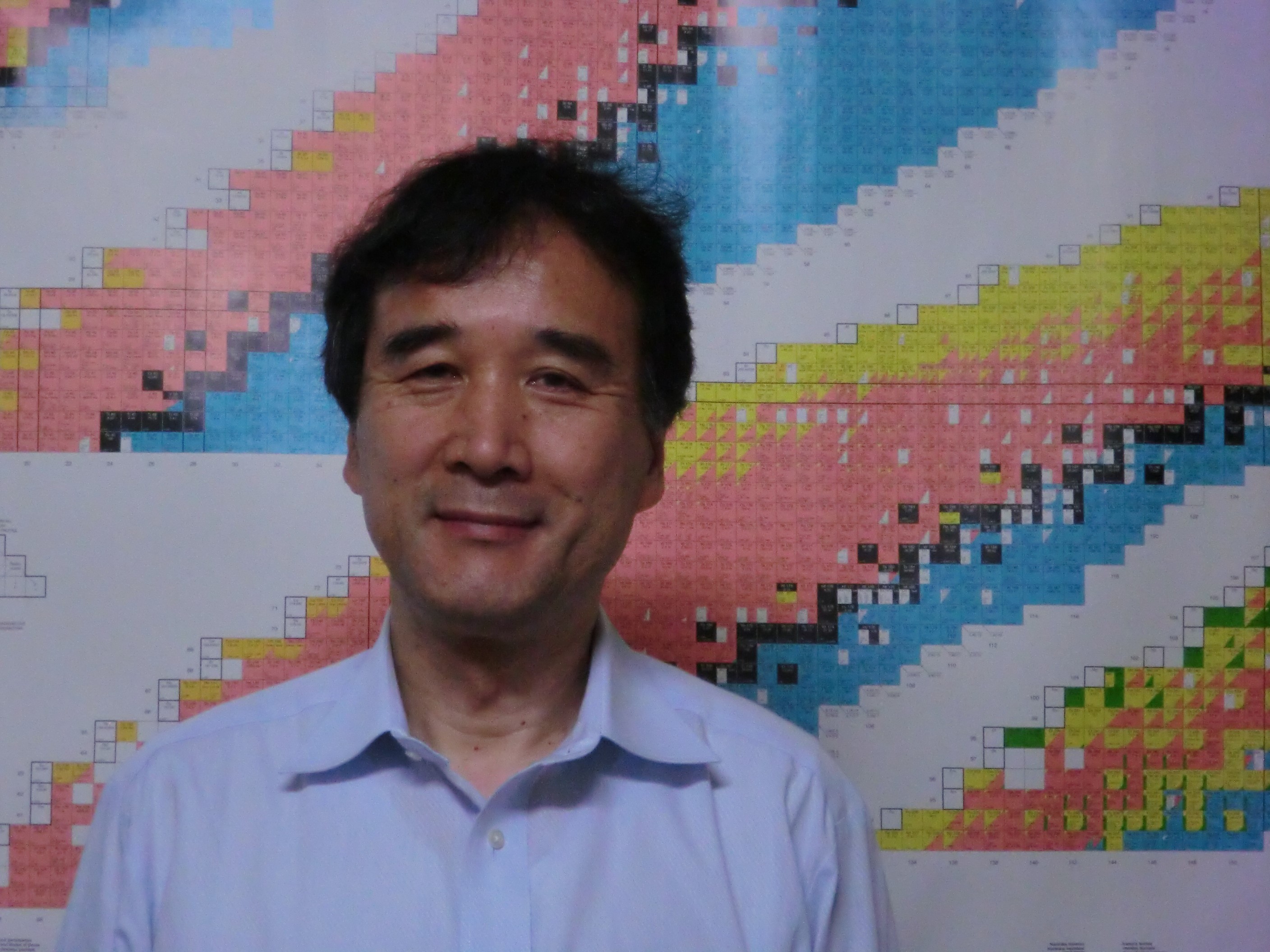 Prof. Kubo studied for his BS and MS, and received his PhD at the University of Tokyo. His research interests have been focused on the application of radiochemical techniques to material characterization and elemental analysis. Extremely small amount of unstable species created by the irradiation of neutron, muon and radioactive isotope beams are characterized through hyperfine interactions detected by emitted electrons and gamma-rays. Neutron activation analysis and elemental analysis by muonic X-ray are among his research topics at J-PARC. He likes walking and disassembling gadgets.
Prof. Kubo studied for his BS and MS, and received his PhD at the University of Tokyo. His research interests have been focused on the application of radiochemical techniques to material characterization and elemental analysis. Extremely small amount of unstable species created by the irradiation of neutron, muon and radioactive isotope beams are characterized through hyperfine interactions detected by emitted electrons and gamma-rays. Neutron activation analysis and elemental analysis by muonic X-ray are among his research topics at J-PARC. He likes walking and disassembling gadgets.
Introduction to Neutron Science
Dr. Yoshie Otake
RIKEN
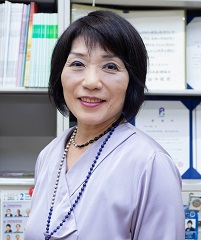 Dr Yoshie OTAKE received her PhD in 1989 from Waseda Univ. on quantum coherency issues related to neutron interferometry. She then joined the development of multilayer interferometry and the U-SANS (USL) experiment at JRR3 (JAEA), and also carried out neutron EDM exploratory experimental research at ILL. She also carried out R&D activities at SPring8 from 1996 to 2002.
Dr Yoshie OTAKE received her PhD in 1989 from Waseda Univ. on quantum coherency issues related to neutron interferometry. She then joined the development of multilayer interferometry and the U-SANS (USL) experiment at JRR3 (JAEA), and also carried out neutron EDM exploratory experimental research at ILL. She also carried out R&D activities at SPring8 from 1996 to 2002.
She participated in a project to develop an accelerator-based compact neutron source system, which is a new approach at RIKEN, and has been the RIKEN compact neutron systems RANS project leader since 2013, aiming to make neutron beams available at manufacturing and infrastructure sites, the project aims to enable the use of neutron beams at manufacturing and infrastructure sites under the slogan 'Neutron anytime, anywhere'. In addition to imaging experiments, RANS enables engineering diffraction, SANS, and fast neutron scattering imaging by utilizing the characteristics of a pulsed neutron source. scattering and fast neutron scattering imaging, taking advantage of the characteristics of the pulsed neutron source, in addition to imaging experiments. The neutron salt meter RANS-µ (Cf source) is being put into practical use, with measurements on real bridges starting in FY2023.
She has been appointed Chairman of the Japanese Society of Neutron Science since 1 April 2023, and is expanding activities to promote science diversity and visualization in the neutron community.
Neutron Diffraction
Prof. Vanessa Peterson
Australian Centre for Neutron Scattering
Honorary Prof. University of Wollongong
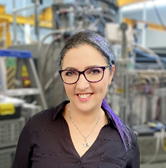 Prof Peterson obtained her PhD in 2004 from the University of Technology, Sydney, in conjunction with the neutron scattering group at the Australian Nuclear Science and Technology Organisation. She previously worked at the NIST Center for Neutron Research (USA), and at the University of Sydney, before returning to Australia help commission the two neutron powder diffractometers Echidna and Wombat at the Australian Centre for Neutron Scattering (ACNS), which she now co-operates. Prof Peterson leads the “Energy Materials” research project from within the ACNS and specializes in real-time material characterization methods to understand materials function. Her work is recognized by the 2022 Nancy Millis Medal from the Australian Academy of Science, by the 2020 Bob Cheary Award for Excellence in Diffraction Analysis for significant long-term contributions to diffraction analysis, by the 2019 Australian Neutron Beam Users award for outstanding research & leadership in neutron science, by the 2017 Society for Crystallographers in Australia and New Zealand’s Sandy Mathieson Medal for distinguished contributions to science involving X-ray, neutron or electron diffraction and/or imaging, by a 2013 NSW Australian Institute of Policy and Science’s Young Tall Poppy Award, and in 2011 where she was a finalist for the Eureka People’s Choice Award. Prof Peterson is a Fellow of both the Royal Society for Chemistry and the Royal Australian Chemical Institute, an elected Fellow and Director at Large of the International Centre for Diffraction Data (USA) and a member of the International Union of Pure and Applied Chemistry’s Commission on Neutron Scattering. Prof Peterson enjoys officiating and playing roller derby and rock climbing.
Prof Peterson obtained her PhD in 2004 from the University of Technology, Sydney, in conjunction with the neutron scattering group at the Australian Nuclear Science and Technology Organisation. She previously worked at the NIST Center for Neutron Research (USA), and at the University of Sydney, before returning to Australia help commission the two neutron powder diffractometers Echidna and Wombat at the Australian Centre for Neutron Scattering (ACNS), which she now co-operates. Prof Peterson leads the “Energy Materials” research project from within the ACNS and specializes in real-time material characterization methods to understand materials function. Her work is recognized by the 2022 Nancy Millis Medal from the Australian Academy of Science, by the 2020 Bob Cheary Award for Excellence in Diffraction Analysis for significant long-term contributions to diffraction analysis, by the 2019 Australian Neutron Beam Users award for outstanding research & leadership in neutron science, by the 2017 Society for Crystallographers in Australia and New Zealand’s Sandy Mathieson Medal for distinguished contributions to science involving X-ray, neutron or electron diffraction and/or imaging, by a 2013 NSW Australian Institute of Policy and Science’s Young Tall Poppy Award, and in 2011 where she was a finalist for the Eureka People’s Choice Award. Prof Peterson is a Fellow of both the Royal Society for Chemistry and the Royal Australian Chemical Institute, an elected Fellow and Director at Large of the International Centre for Diffraction Data (USA) and a member of the International Union of Pure and Applied Chemistry’s Commission on Neutron Scattering. Prof Peterson enjoys officiating and playing roller derby and rock climbing.
Inelastic Scattering
Dr. Ryoichi Kajimoto
J-PARC Center, JAEA

Quasi-elastic Scattering
Prof. Michihiro Nagao
Instrument Scientist, National Institute of Standards and Technology, USA
Research Professor, University of Maryland, USA
Affiliate Associate Professor, University of Delaware, USA
Visiting Professor, Institute of Materials Structure Science, KEK, Japan
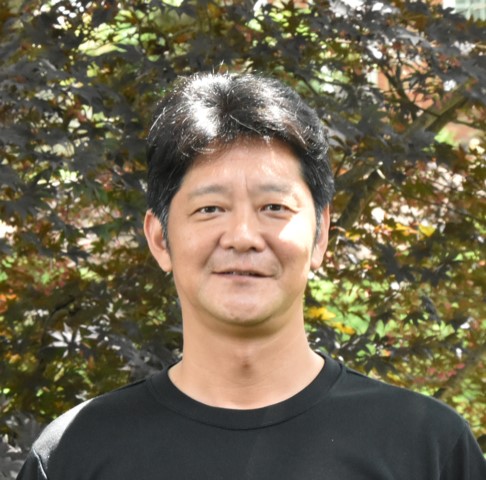 Professor Nagao graduated from Hiroshima University and left the graduate school for employment being a Research Associate at the University of Tokyo in 1997. He was an instrument scientist of the SANS-U (1997-2003) and the lead instrument scientist of the iNSE (2003-2006). He received his PhD from the University of Tokyo in 2001. He became an instrument scientist of the NIST-NSE at the National Institute of Standards and Technology (NIST) Center for Neutron Research (NCNR), USA in 2006. He was also affiliated with Indiana University as a Staff Scientist (2006-2010), Associate Scientist (2010-2018) and Senior Scientist (2018-2020). He became a visiting Research Professor at the University of Maryland (UMD) (2020-2021). Currently he is a Research Professor at UMD, collaborates to upgrade the NIST-NSE instrument as Affiliate Associate Professor at the University of Delaware (2020-) and collaborates to develop NSE experiments as Visiting Professor at KEK (2023-). His research interest is on neutron and X-ray scattering studies of soft condensed matter systems.
Professor Nagao graduated from Hiroshima University and left the graduate school for employment being a Research Associate at the University of Tokyo in 1997. He was an instrument scientist of the SANS-U (1997-2003) and the lead instrument scientist of the iNSE (2003-2006). He received his PhD from the University of Tokyo in 2001. He became an instrument scientist of the NIST-NSE at the National Institute of Standards and Technology (NIST) Center for Neutron Research (NCNR), USA in 2006. He was also affiliated with Indiana University as a Staff Scientist (2006-2010), Associate Scientist (2010-2018) and Senior Scientist (2018-2020). He became a visiting Research Professor at the University of Maryland (UMD) (2020-2021). Currently he is a Research Professor at UMD, collaborates to upgrade the NIST-NSE instrument as Affiliate Associate Professor at the University of Delaware (2020-) and collaborates to develop NSE experiments as Visiting Professor at KEK (2023-). His research interest is on neutron and X-ray scattering studies of soft condensed matter systems.
Small-Angle Scattering
Prof. Elliot Paul Gilbert
Australian Nuclear Science and Technology Organisation
Honorary Prof. University of Queensland
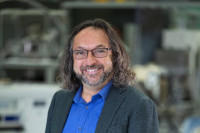 Prof. Gilbert completed his undergraduate studies in Chemical Physics at the University of Edinburgh and received his PhD from the Australian National University in 1998 focussing on the phase behavior in n-alkane systems. Following an Australian Research Council Industrial Postdoctoral Fellowship, he joined the Small-Angle Scattering Group at the Intense Pulsed Neutron Source at Argonne National Laboratory. He joined ANSTO in 2001 to lead the project for the design, construction and commissioning of the QUOKKA small-angle neutron scattering instrument at the OPAL facility and is currently instrument-responsible. Prof. Gilbert also devised, initiated and leads ANSTO’s research activities in the application of scattering to investigate fundamental and industrial problems in food materials science. While Prof. Gilbert’s interests lie in both soft and hard condensed matter, he has also sought to develop unique and specialised sample environments to extend the use of scattering instrumentation into new scientific areas; such devices include the first differential scanning calorimeter capable of enabling the simultaneous measurement of SANS and a Rapid ViscoAnalyser that enables SANS to be measured during a food process. He is a member of the IUCr Commission on Small-Angle Scattering and chaired the international conference on small-angle scattering in Sydney (2012).
Prof. Gilbert completed his undergraduate studies in Chemical Physics at the University of Edinburgh and received his PhD from the Australian National University in 1998 focussing on the phase behavior in n-alkane systems. Following an Australian Research Council Industrial Postdoctoral Fellowship, he joined the Small-Angle Scattering Group at the Intense Pulsed Neutron Source at Argonne National Laboratory. He joined ANSTO in 2001 to lead the project for the design, construction and commissioning of the QUOKKA small-angle neutron scattering instrument at the OPAL facility and is currently instrument-responsible. Prof. Gilbert also devised, initiated and leads ANSTO’s research activities in the application of scattering to investigate fundamental and industrial problems in food materials science. While Prof. Gilbert’s interests lie in both soft and hard condensed matter, he has also sought to develop unique and specialised sample environments to extend the use of scattering instrumentation into new scientific areas; such devices include the first differential scanning calorimeter capable of enabling the simultaneous measurement of SANS and a Rapid ViscoAnalyser that enables SANS to be measured during a food process. He is a member of the IUCr Commission on Small-Angle Scattering and chaired the international conference on small-angle scattering in Sydney (2012).
Neutron Reflectometry
Dr. Christy J. Kinane
ISIS Neutron and Muon Source, UK
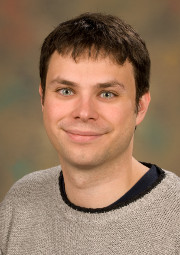 Dr Christy J Kinane received his PhD from the University of Leeds, UK in 2008. His PhD was on studying magnetic roughness in magnetic multilayers using X-ray and neutron scattering.
Dr Christy J Kinane received his PhD from the University of Leeds, UK in 2008. His PhD was on studying magnetic roughness in magnetic multilayers using X-ray and neutron scattering.
Having completed his PhD he moved to the ISIS neutron facility, where he because the ISIS target station one CRISP beamline instrument scientist for 8 years before moving to the POLREF polarised reflectometer on the ISIS second target station, where he currently works. He now primarily runs the POLREF beamline and works with the USER community across the ISIS instrument suite. He now specialises in studying magnetic thin films and superconductors using polarised neutron reflectometry and resonant X-rays, being a frequent user of other facilities such as Diamond, NCNR and SNS in the United States.
Prompt-gamma Neutron Activation Analysis
Dr. Takahito Osawa
JAEA
 Dr. Takahito Osawa received his Ph.D. from the University of Tokyo in 2003.
Dr. Takahito Osawa received his Ph.D. from the University of Tokyo in 2003.
He specializes in Earth and planetary science and has analyzed extraterrestrial materials such as cosmic dusts, meteorites, and samples brought back to Earth by asteroid explorers. He is familiar with a variety of analytical techniques and has recently devoted himself to the development of neutron-induced prompt γ-ray analysis and muonic X-ray analysis. He is the instrument supervisor of the prompt γ-ray analysis system (PGA) installed at JRR-3 since 2010. He is also an expert in automation engineering and has achieved full automation of PGA system with his outstanding control technology. He is very mechanically savvy, but the only books He read at home are about religion, philosophy, and history.
Muon Spin Rotation/Relaxation
Prof. Kenji M. Kojima
TRIUMF Centre for Molecular and Materials Science and Stewart Blusson Quantum Matter Institute, the University of British Columbia, Canada
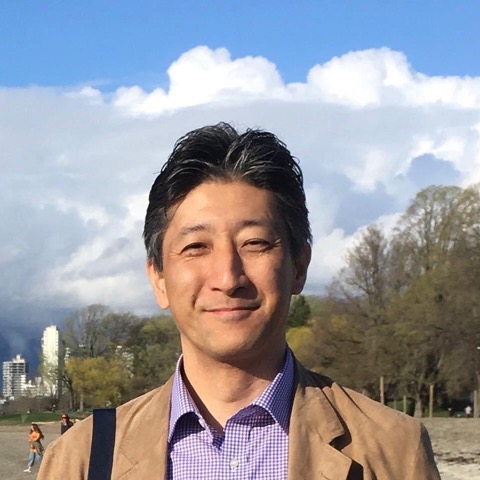 Professor Kenji M. Kojima has 30+ years experience of condensed matter research using muon and other probes. He obtained his PhD at the University of Tokyo in 1996 on studies of Quantum Magnets using muons and neutrons. He spent two years as a Postdoctoral fellow at Columbia University (New York), and came back to the University of Tokyo as a Research Associate / Assistant Professor. He moved to KEK in 2009 as an Associate Professor and constructed the muon spin spectrometers at J-PARC MLF, which are currently operational. In 2018, he moved to TRIUMF, where he had been a frequently visitor for experiments. His current research areas are semiconductors, magnetism and superconductivity using muons and neutron scattering techniques, and also instrumentations for the future muon spectroscopies.
Professor Kenji M. Kojima has 30+ years experience of condensed matter research using muon and other probes. He obtained his PhD at the University of Tokyo in 1996 on studies of Quantum Magnets using muons and neutrons. He spent two years as a Postdoctoral fellow at Columbia University (New York), and came back to the University of Tokyo as a Research Associate / Assistant Professor. He moved to KEK in 2009 as an Associate Professor and constructed the muon spin spectrometers at J-PARC MLF, which are currently operational. In 2018, he moved to TRIUMF, where he had been a frequently visitor for experiments. His current research areas are semiconductors, magnetism and superconductivity using muons and neutron scattering techniques, and also instrumentations for the future muon spectroscopies.
Muonic X-ray Measurements
Prof. Kazuhiko Ninomiya
Institute for Radiation Sciences, Osaka University
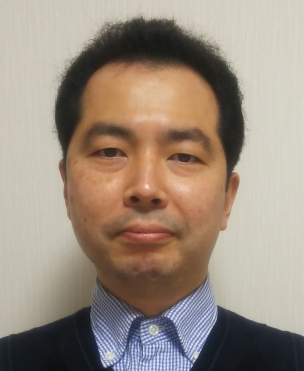 Dr. Kazuhiko Ninomiya studied at Osaka University for his bachelor’s degree and master’s degree in Graduate School of Science, and received his Ph.D. degree from Osaka University in 2008. He was Postdoctoral Fellow for Laboratory of Nuclear Studies, Osaka University and Advanced Science Research Center, Japan Atomic Energy Agency during 2008-2012. He is now Associate Professor of Institute for Radiation Science, Osaka University. His research interests are muon science and environmental radiochemistry. Especially, he is recently working on research and development for non-destructive analysis method using muon. He will give presentation on introduction of muon analysis method and recent topics related to this method.
Dr. Kazuhiko Ninomiya studied at Osaka University for his bachelor’s degree and master’s degree in Graduate School of Science, and received his Ph.D. degree from Osaka University in 2008. He was Postdoctoral Fellow for Laboratory of Nuclear Studies, Osaka University and Advanced Science Research Center, Japan Atomic Energy Agency during 2008-2012. He is now Associate Professor of Institute for Radiation Science, Osaka University. His research interests are muon science and environmental radiochemistry. Especially, he is recently working on research and development for non-destructive analysis method using muon. He will give presentation on introduction of muon analysis method and recent topics related to this method.
Advanced Science with Neutrons : White Neutron Holography
Prof. Kenji Ohoyama
Ibaraki University
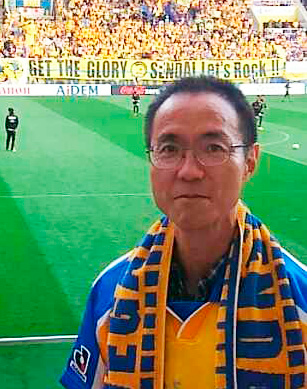 Prof. Kenji Ohoyama studied for his BS and MS, and received his PhD at Tohoku University. He has over 35 years of experience in neutron science in JRR-3 and J-PARC. After graduation, he worked at Institute for Materials Research, Tohoku Univ. until 2015, and now is working at Ibaraki Univ., which is adjacent to J-PARC. His main research interest is hyper-order structures caused by foreign element doping in functional materials, such as semiconductors, using a novel and unique technique, white neutron holography, newly developed by his group.
Prof. Kenji Ohoyama studied for his BS and MS, and received his PhD at Tohoku University. He has over 35 years of experience in neutron science in JRR-3 and J-PARC. After graduation, he worked at Institute for Materials Research, Tohoku Univ. until 2015, and now is working at Ibaraki Univ., which is adjacent to J-PARC. His main research interest is hyper-order structures caused by foreign element doping in functional materials, such as semiconductors, using a novel and unique technique, white neutron holography, newly developed by his group.

